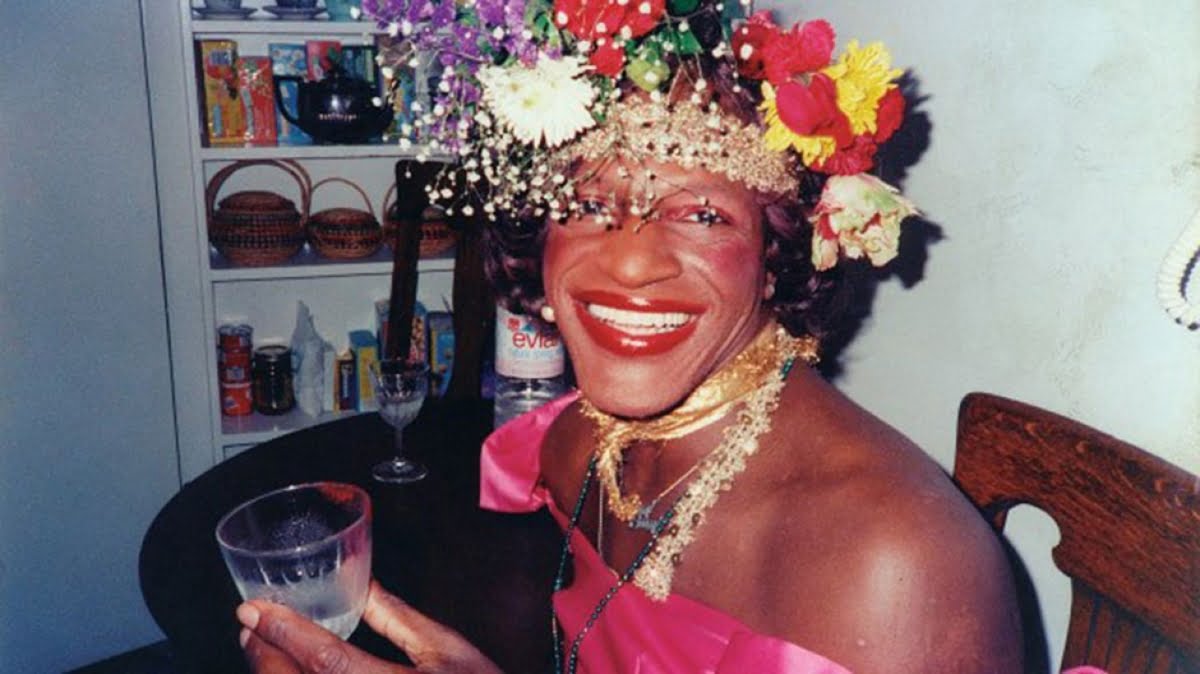History isn’t something you look back at and say it was inevitable. it happens because people make decisions that are sometimes very impulsive and of the moment, but those moments are cumulative realities
MARSHA P. JOHNSON
Malcolm Michaels Jr., who came to be famously known as Marsha (Pay it No Mind) Johnson was a gay liberation activist, self-identified drag queen, and an advocate for the rights of the LGBTQIA+ community during the 1960s in America when identifying as anything rather than a ‘man’ or a ‘woman’ was considered a disease.
Marsha was generous, kind and funny, and fought for the economic and legal rights of the people of her community. Her mother had once said that being a homosexual meant that you are ‘lower than a dog’ but Marsha knew her mother was not aware of the rights her community had. As a child, when Marsha found herself inclined towards feminine dressing, she began wearing dresses at the age of 5. However, her act of defying norms and claiming her identity was curbed by the ruthless bullying of the neighbourhood boys.
At the age of 17, she left her home in New York City and moved to Greenwich Village in 1966. This is where Marsha became acquainted with a diverse gay community, which was instrumental in her reclaiming her identity with aplomb. She used drag as a way to explore her identity and here is when she chose the name Marsha P. Johnson for herself. There was a very popular bar, Stonewall Inn, in the vicinity and Marsha was the first drag queen there. It was a bar owned by the mafia that initially only permitted gay men. Later on, it opened up to drag queens and women.
Also read: The History Of Pride Parades In India
The Stonewall Uprising of 1969
Life during the 1960s was miserable for the queer community as hate against the community deep-rooted and it was illegal to dress up as a drag artist. The fear of getting arrested always persisted. The police would often barge in the bar and harass them and the owner of the bar was compelled to bribe them.

Which is why June 28, 1969 is a remarkable day in the history of the LGBTQIA+ movement. The police as usual conducted raids in gay bars in Greenwich and started dragging people into their vans. They raided the Stonewall Inn as well. There was, however, resistance and a sensation in the air of the beginning of a revolution. While police raids on gay bars were routine in the 1960s, this time the resistance from the gay residents of Greenwich spiraled into more protests for a few days after. The demonstrators organised into activist groups demanding the right to embrace their sexual orientation and live with dignity. This went on to the remembered historically as the Stonewall Uprising of 1969. Marsha, who was 23 years old back then, was one of the significant figures who stood tall against the police clampdown on gay bars.
Those who were arrested started cheering the ones who were still out there. There were around 200 people on the streets, mostly the ones who were customers at the Stonewall Inn. Marsha was a significant presence at the uprising and is often referred to as one among the individuals to have been in the vanguard of the pushback.
Also read: In Conversation With Dr. Aijaz Bund — The Question Of Pride In Kashmir
The Stonewall uprising was the beginning of the organised fight for the rights of the LGBTQIA+ community. It led to the formation of the Gay Liberation Front which was significantly shouldered by Marsha. She did not allow herself to be held back by fear, and worked closely with her friend Sylvia Rivera, a fellow activist and drag artist.
Marsha P. Johnson and Sylvia Rivera: A companionship throughout setbacks
The Stonewall uprising was the beginning of the organised fight for the rights of the LGBTQIA+ community. It led to the formation of the Gay Liberation Front which was significantly shouldered by Marsha. She did not allow herself to be held back by fear, and worked closely with her friend Sylvia Rivera, a fellow activist and drag artist.
Together, Marsha and Sylvia founded the Street Transvestite Action Revolutionaries (STAR) in 1970, to provide housing support to the homeless LGBTQIA+ youth and sex workers in Manhattan. Marsha and Sylvia were the ‘mothers’ of the household. Initially, they started their first STAR house in a truck in a parking lot, but it was towed and they were pushed to find a fixed place.
They set up their home at 213 E. Second Avenue and worked hard to pay the rent. They both taught the people in the STAR house to read and write. In North America, it became the first LGBT youth shelter. Sylvia and Marsha were considerate, they knew what it was to suffer on the homophobic streets of the country.
Demise and legacy: A life of courage and strength
Sylvia Rivera and Victoria Cruz, another American LGBT rights activist, loved Marsha. Marsha was 46 when her body was recovered from the Hudson River. Initially, the police made a statement that Marsha died by suicide but all her friends and everybody else who had ever interacted with her knew that she could have never taken such a step. The cause of Marsha’s death was also later on changed from ‘suicide’ to ‘undetermined’.
Victoria Cruz appeared in the 2017 documentary titled, ‘The Death and Life of Marsha P. Johnson’. A year back she began working on the case of Marsha’s death because she didn’t want to retire without finding the truth and delivering justice. Cruz, during her investigation, found a lot of undiscovered and hidden suspects to solve the case and there were also cops who simply showed her the red flag, indicating that they would not be able to help her.
In the year 1992, the Anti Violence Project recorded plenty of murders. The anti-LGBT violence increased and in that particular year, 1,300 reports of bias-based crime were reported, out of which 12-18 per cent of the reports stated that the police was responsible for initiating violence against the members of the community.
The legacy of Marsha P. Johnson can never be forgotten along with all the other activists who suffered mentally and physically, abandoned by their families yet found a home away from home. Marsha made sure to create an environment where people are open-minded, acceptable and understand the pain and suffering of others. She demanded equality, representation and a decent livelihood: all that wasn’t much to ask for in the first place simply because she was a human being and was entitled to have a dignified life just like others.
Featured image source: BBC
About the author(s)
Mumtaz is a post graduate mass communication student at AJK MCRC, Jamia Millia Islamia, who’s always been passionate towards learning more about human rights and finding solutions for societal issues. According to her concerning matters should be discussed and debated in a way that is easy to understand for a fruitful and constructive change; she wishes to do the same through her writings. She believes in speaking up for what rightfully belongs to each and every human being.




